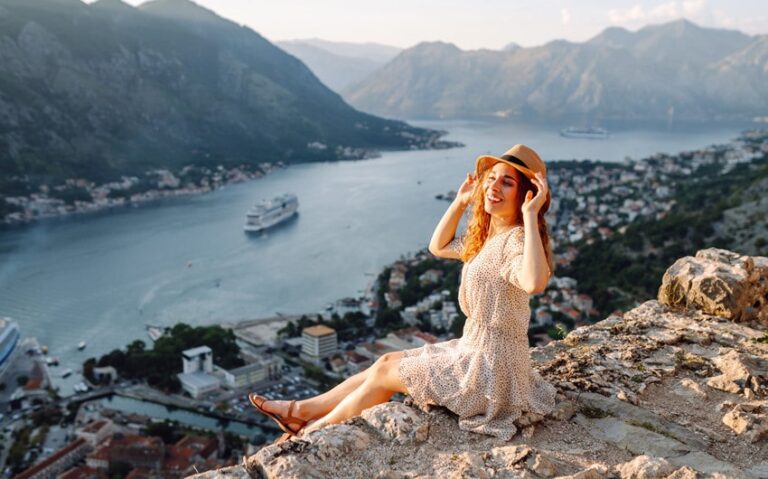What Do Travel Writers Do? More Than Just Wander and Write
At first glance, it sounds dreamy: get paid to travel the world, write about it, and live off adventure. But what do travel writers actually do? The answer is more layered than most people expect. It’s a job built on observation, interpretation, and storytelling—equal parts journalism, art, and introspection. Travel writers don’t just move through places. They pay attention. They translate experience into meaning. And behind every glossy article is a tangled web of deadlines, self-doubt, deadlines, and details that most readers never see.
1. They Capture the Spirit of a Place, Not Just the Facts
Travel writers don’t simply list things to do. They interpret what it feels like to be somewhere—how light falls across a market stall in Marrakech, or how silence echoes in an Icelandic fjord. Their goal is to help readers feel transported. They notice details that others walk past. They describe settings in a way that reveals not just what’s there, but why it matters.
- They observe like artists: Small gestures, overheard conversations, the smell of rain on cobblestones—it all gets stored for later use.
- They translate atmosphere: Instead of saying “busy street,” they’ll write “a pulse of scooters, steam, and sidewalk chatter.”
- They write with emotion: Places aren’t neutral—they evoke reactions. Good travel writing explores that inner dialogue.
2. They Do a Ton of Research—Before, During, and After
Despite the romantic idea of just “going with the flow,” most travel writers are researchers at heart. They read guidebooks, comb through blogs, interview locals, and visit historical archives. The writing may sound effortless, but it’s built on layers of context.
- Before the trip: They research visas, weather, cultural etiquette, current events, and potential story angles.
- During the trip: They take notes constantly—on food, people, sensory experiences, and logistical tips.
- Afterward: They fact-check names, spellings, history, and even distances to ensure accuracy.
In short: they work long before the first word hits the page.
3. They Tailor Their Writing for Specific Audiences
Not all travel writing is the same. A guidebook entry is different from a personal essay, and a magazine feature varies from a hotel review. Good travel writers know how to shape their tone, structure, and detail level to fit the outlet and reader.
- For guidebooks: Concise, practical, and neutral. Focused on facts, not feelings.
- For blogs: Personal, opinionated, and story-driven. Readers want personality and insight.
- For features or editorials: Narrative-driven with a beginning, middle, and end. Often includes reflection or social context.
This adaptability is part of the job—every story is shaped for someone specific.
4. They Often Pitch Their Own Stories
Many travel writers are freelancers. That means they don’t just write—they pitch, negotiate, invoice, edit, and promote. Coming up with a fresh story idea and selling it to an editor is part of the hustle.
- They write compelling pitches: Usually just a few paragraphs outlining the idea, destination, and unique angle.
- They chase relevance: Editors want timely, focused content that fits current trends or publishing calendars.
- They face rejection regularly: For every published story, there might be five that didn’t land.
The writing is just the visible tip. Underneath is a business mindset that keeps the work going.
5. They Work Across Mediums—Not Just Print
Today’s travel writers are multi-platform creators. Many also run blogs, post on social media, record podcasts, or create video content. The modern travel writer is expected to do more than just write well—they’re expected to build a voice across platforms.
- Social media expands reach: Instagram, TikTok, and Twitter are often used to build a following or promote work.
- Newsletters foster direct connection: Many writers now create personal email-based publications with behind-the-scenes stories.
- Content partnerships: Writers may collaborate with brands, tourism boards, or hotels to create sponsored content—while balancing ethics and disclosure.
The job isn’t bound to one medium. It adapts constantly.
6. They Tell the Truth—Even When It’s Inconvenient
Good travel writing doesn’t just highlight the beautiful—it also addresses the complicated. Over-tourism, colonial legacies, ethical dilemmas, and local tensions are all part of the real story. The best travel writers don’t avoid discomfort. They contextualize it.
- They balance honesty with respect: Critiquing a destination without condescension is a skill.
- They acknowledge privilege: Especially when traveling to places where inequality is visible.
- They question assumptions: What looks “exotic” to one traveler may be sacred or sensitive to locals.
Authentic travel writing challenges the postcard version of a place—and invites reflection, not just escapism.
7. They Embrace Boredom, Setbacks, and Loneliness
Not every moment is Instagrammable. Sometimes travel writing means waiting three hours for a bus that never comes, or trying to write through jet lag. It means eating alone, getting sick abroad, or missing flights. These parts don’t always make it into the story—but they shape the perspective behind it.
- They write even when they’re uninspired.
- They learn to sit with uncertainty and disorientation.
- They sometimes question why they do it—but keep going anyway.
It’s not all glamour. It’s persistence with a passport.
8. They Reflect as Much as They Report
At its best, travel writing is as much about the writer as the destination. It’s not just “what I saw”—it’s “what it made me think about.” Great travel writers understand that how you see the world reveals who you are. So they dig deep:
- How did this place surprise or challenge me?
- What assumptions did I bring—and break?
- What does this experience reveal about humanity, connection, or belonging?
This kind of writing isn’t just informative—it’s transformative. For the writer, and the reader.
So, What Do Travel Writers Really Do?
They pay attention. They carry notebooks into cafes, ask awkward questions, and listen when others would move on. They write in airports, edit in hostels, and pitch from park benches. They spend hours describing how light changed the color of a mountain at dusk—not because they have to, but because they can’t not. It’s not just a job. It’s a way of being in the world—curious, humble, always looking closer.







